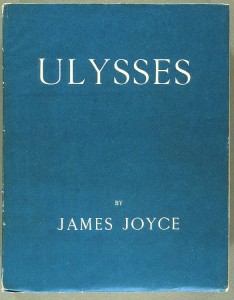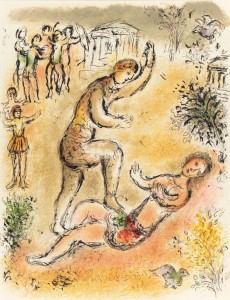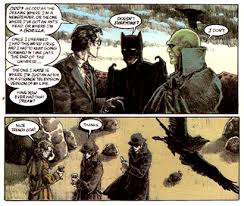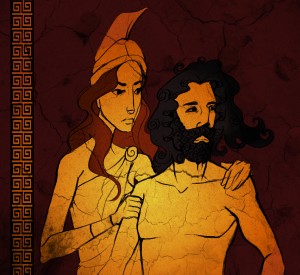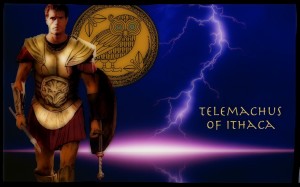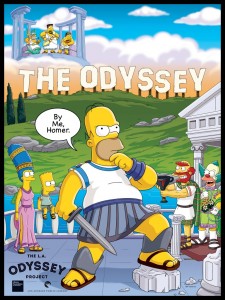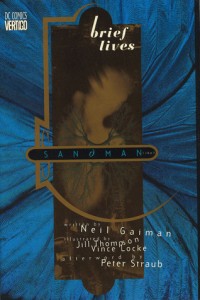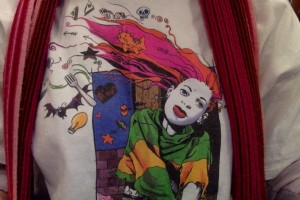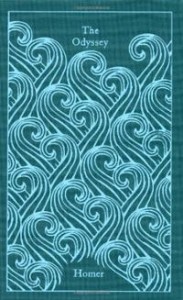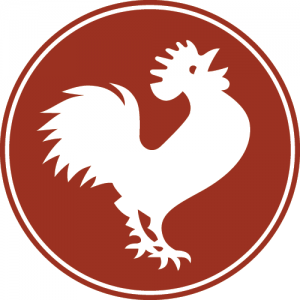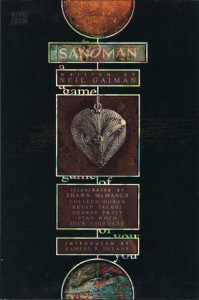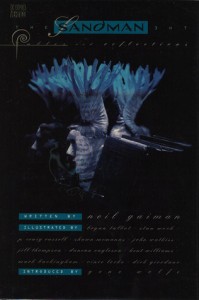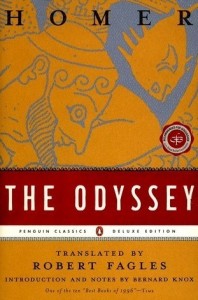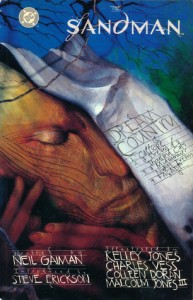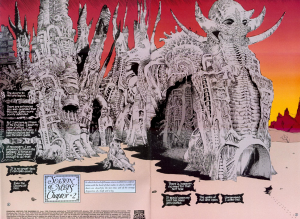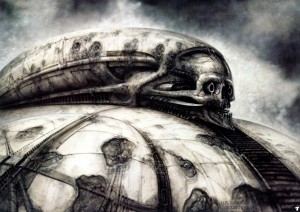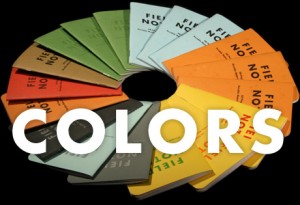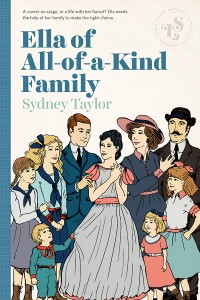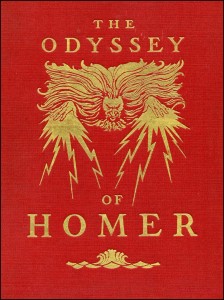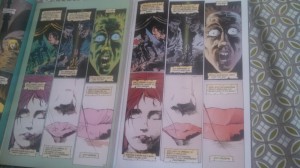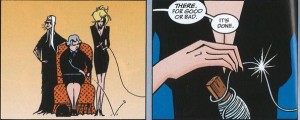
Welcome to week 6, the penultimate week of the Sandman readalong. You can comment on this blog or tweet with the hashtag #SandMN.
The Kindly Ones is the penultimate storyline of the series, and contains its climax, the death of Dream.
I was going to do a whole spoiler spacing thing, but c’mon, these issues came out 20 years ago. The spoiler period is OVER.
Originally planned as 6 issues, this story more than doubled that, and also if I remember correctly, started coming out less and less monthly as it went. I remember many, many people complaining at the time that they hated the art and didn’t like the storyline.
What I noticed on this re-read is that this is a storyline full of assholes, and in which lots of beloved characters die. (But do they die fer real? We’ll have to see next week, with The Wake.) It is mostly illustrated by Marc Hempel, whose iconic, seemingly simplistic art wasn’t a fan favorite. I liked it then, I like it more now, and think it does a great job moving us through this long, echoing story to the climax of the series. Dream is drawn about as reductively as he has been throughout the series, and he still is by far the saddest, worried-est looking he’s ever been until the very end, when he looks, to me, at peace.
The opening story, The Castle, was part of a Vertigo promo piece, and does a good job of re-situating us in the series and reminding us of a lot of the minor players.
Each issue opens with an image of a thread, and comments that can relate to Dream, to knitting, as well as to the process of creating the Sandman itself.
Is it ready yet? Are you done?
Nearly.
1. Lucifer and Mazikeen! Daniel kidnapped.
2. Lyta meets the three-in-one, Cluracan strays from the path and is an ass, Nuala is wimpy Dream is an ass,
3. Loki and Puck. Hob, Destiny, Delirium, “And she went off to look for [Barnabas], trailing occasional fish.” Lyta goes nuts, flashback to Doll’s House and other issues.
4. Remiel is (still) an ass. Lyta bops between fantasy and “reality” but both are real enough, in this series. Rose Walker! Catches a peeping Abel, and oh, SHE was the sleepy sitter. Hey, who are these two sisters that look like Chantal and Zelda? So many echoes! Note: grey background is dream-y, white is realer. Corinthian 2.0!
5. “Can I have more water please? My hair drank most of it.” Rose passes Lyta, and visits Zelda, dying of AIDS, who now speaks because Chantal is dead. Rose is sent back to England, Corinthian 2.0 and Matthew are sent to find Daniel. Poor dead Carla. I feel like we’ve got a whole list of dead nice people that litter the path of this comic.
6: No strings, and we’re echoing Doll’s House again, and the first time Rose flew to England. I love Glyn Dillon’s version of Rose. Cute solicitor, 3 old ladies (the one who says she killed someone after destroying his life is Lyta’s birth mother, the first Fury), a creepy old-school fairy tale, and we find Paul and Alex from the beginning of the series. Alex has Ethel’s picture on the nightstand, and has the original Piglet with him (did he nick it from Christopher Robin Milne?)
7. Love the snake cover. It’s Dave McKean’s favorite. Hey, we know this woman, but not by “Larissa.” And what does she wnat with Lyta? Thessaly kills a little lamb (she really is a humorless bitch through this) and Lyta finally finds her way in the dreamscape to the Furies, I mean, The Kindly Ones, and while they can’t avenge Daniel, they can go after Dream who killed Orpheus in Brief Lives.
8. A day in the life of Dream. Delirium tries to recruit Dream to find Barnabas but he’s not going. Rose gets some action, the Corinthian eats eyeballs to find Carla’s killer, and the poor dead Gryphon. “Larissa” eats lamb stew (stone cold, that one) Nuala pines, Rose gets dissed: “Very perceptive”.
9. “Almost time. Nearly. Very nearly.”
Rose meets her grandfather on a grey-backed page, and her heart is returned, just as it’s learning to break. (Readers of Wicked + Divine, were you reminded strongly of Luci with this scene?) Corinthian battles Loki. Oh, poor dead Gilbert. I loved him so, even if he was a place, not a person. And we finally learn who the woman is who broke Dream’s heart, or vice versa, and their talk does not go well, as was previously prophesied (by Destiny?)
10. “There.” Puck, Loki trying to get Thor to kill him, why does that poor skinny woman stay with Loki? (what is it with women in servant roles?) Poor dead Abel, boring Faerie, badass Merv Pumpkinhead goes out like Rambo alongside his bats with bowler hats. Nuala meets Delirium, Rose flies back and gets chatty with Ethel Cripps’ niece (I was very fond of Judith Krantz books when I was young, and don’t recall having to look up words. I preferred Mistral’s daughter to Princess Daisy, though. Less rape-y.) Shirley Jackson We Have Always Lived in the Castle reference, and now I get it, woo hoo! “I am here, Nuala.”
11. Which McKean illustrated with a fish on a string and a music stand even before Gaiman wrote 12 which had both those things. Weird. No more string as it was cut last issue. “Who’s there?” Hamlet reference! In case you hadn’t guessed, this is a tragedy. Goldie! Oh, Nuala. Barnabas! Lyta realizes she’s made a terrible, terrible mistake.
12. Penultimate issue of penultimate story line. Dream prepares for battle (again.) Delirium meets Satan! “Down the road I go, following my fishie.” Matthew takes a stand, and we see Hempel’s version of Death which I really like, and Dream sheds all his stuff (but keeps his pants on, and finally doesn’t look scared.
13. Unlucky 13. “What are you doing? “Waiting for you.” Indeed.
Hal is less of an ass. Rose is knocked up. (Again, echoes of Unity).
The nurse is reading a paper with the headline “Local Solicitor Kills Himself when Gay Lover Walks Out.” Could this be Rose’s Jack?
Alex wakes finally so perhaps there is hope for sinners after all. Daniel grows up fast, and the Kind Ladies have tea.
“There. For good or bad. it’s done.”
The Kindly Ones. I laughed. I cried. It was better than Cats, because as Lucifer said about the song ‘Memories,’ “the melody is trite, while the awkward paraphrases of lesser Eliot poems in the lyrics are grating in the extreme.”
What did everyone else think? I found it immensely satisfying as a whole story, though I am left with a nagging feel that the women characters in this: Larissa/Thessaly, Nuala, Lyta, the Kindly Ones, are more dastardly than they need to be.
Previous posts:
Sandman Readlong week five: link
Sandman Readalong week four: link
Sandman Readalong week three: link
Sandman Readalong week two: link
Sandman Readalong week one: link
Sandman Readalong schedule: link
